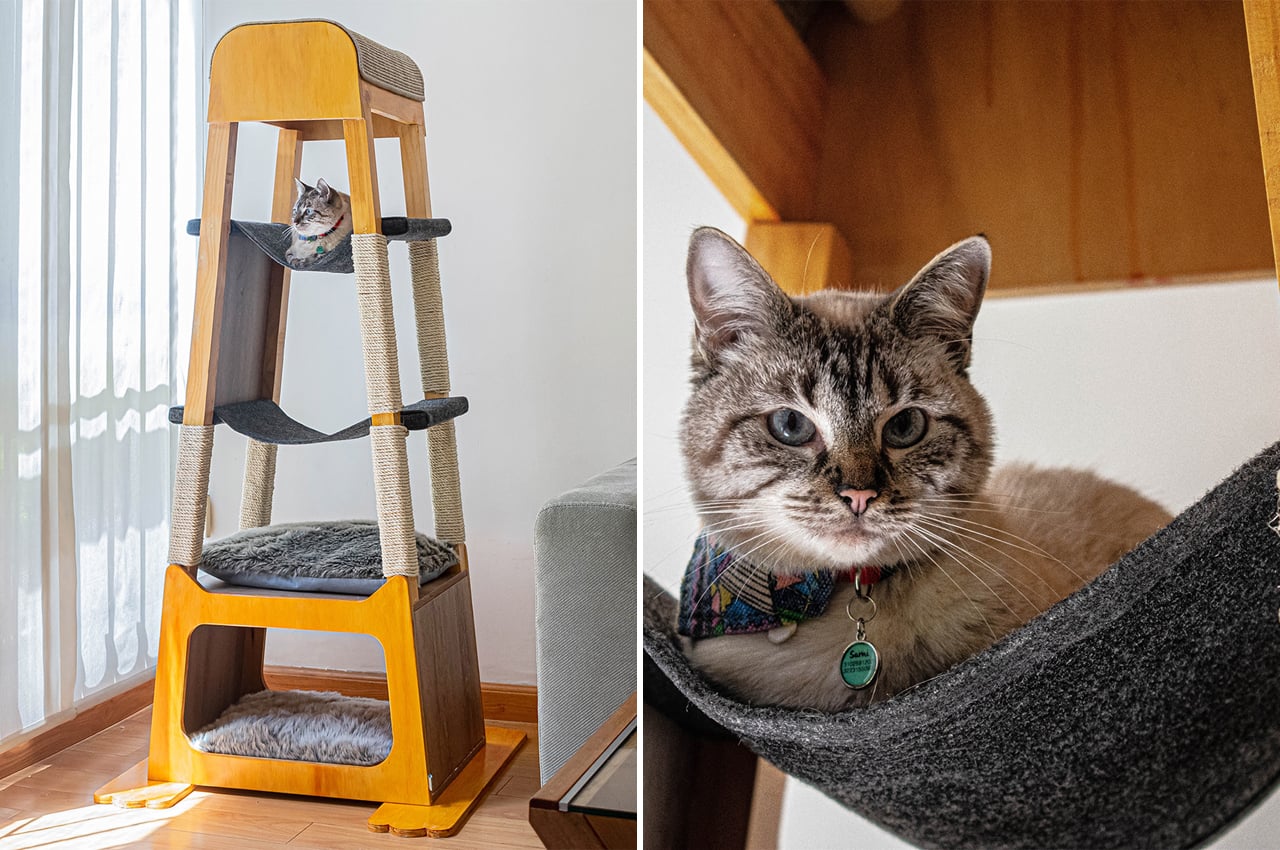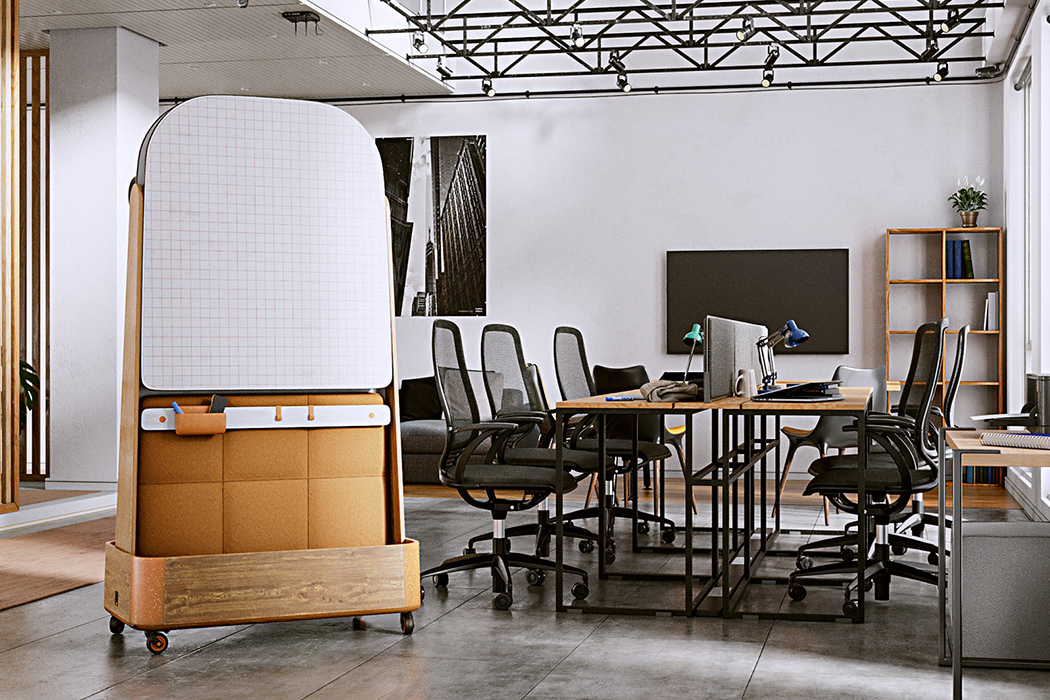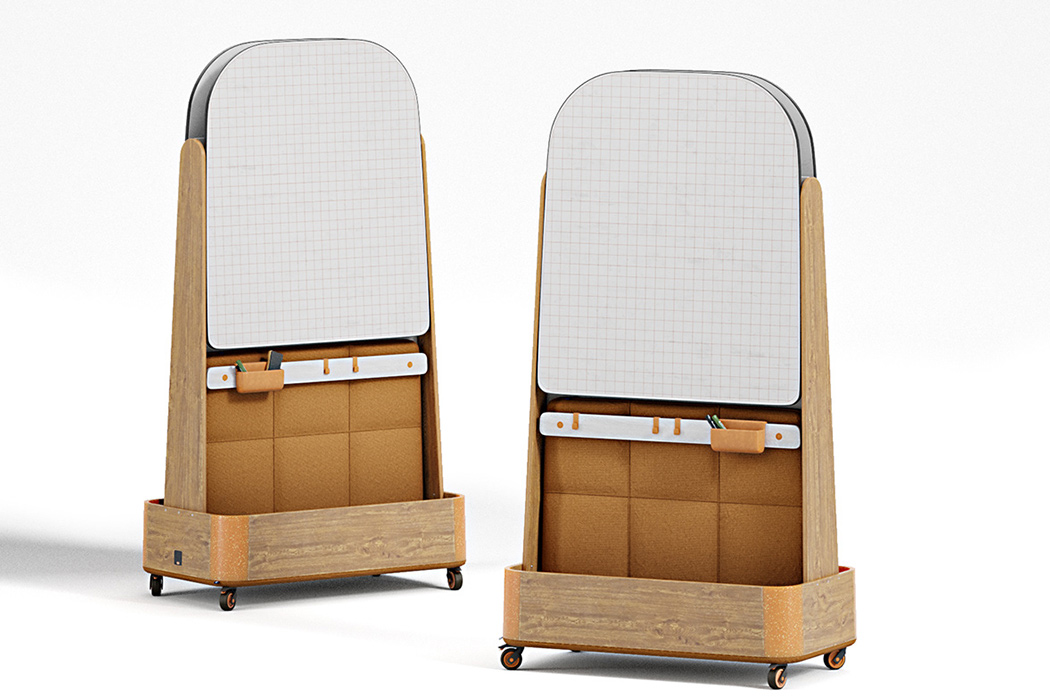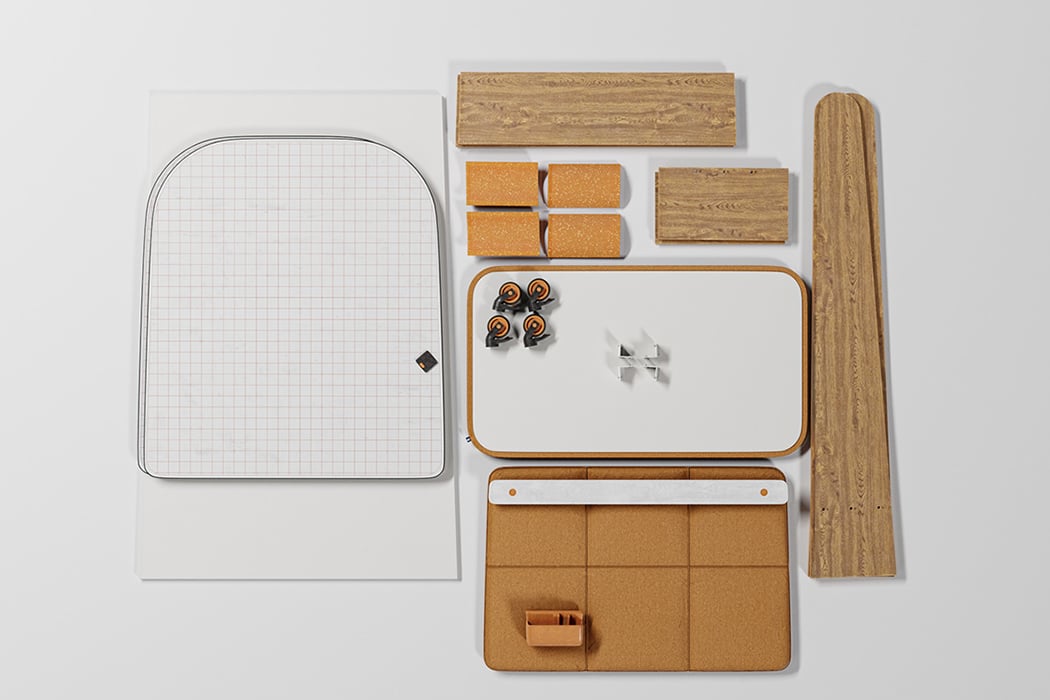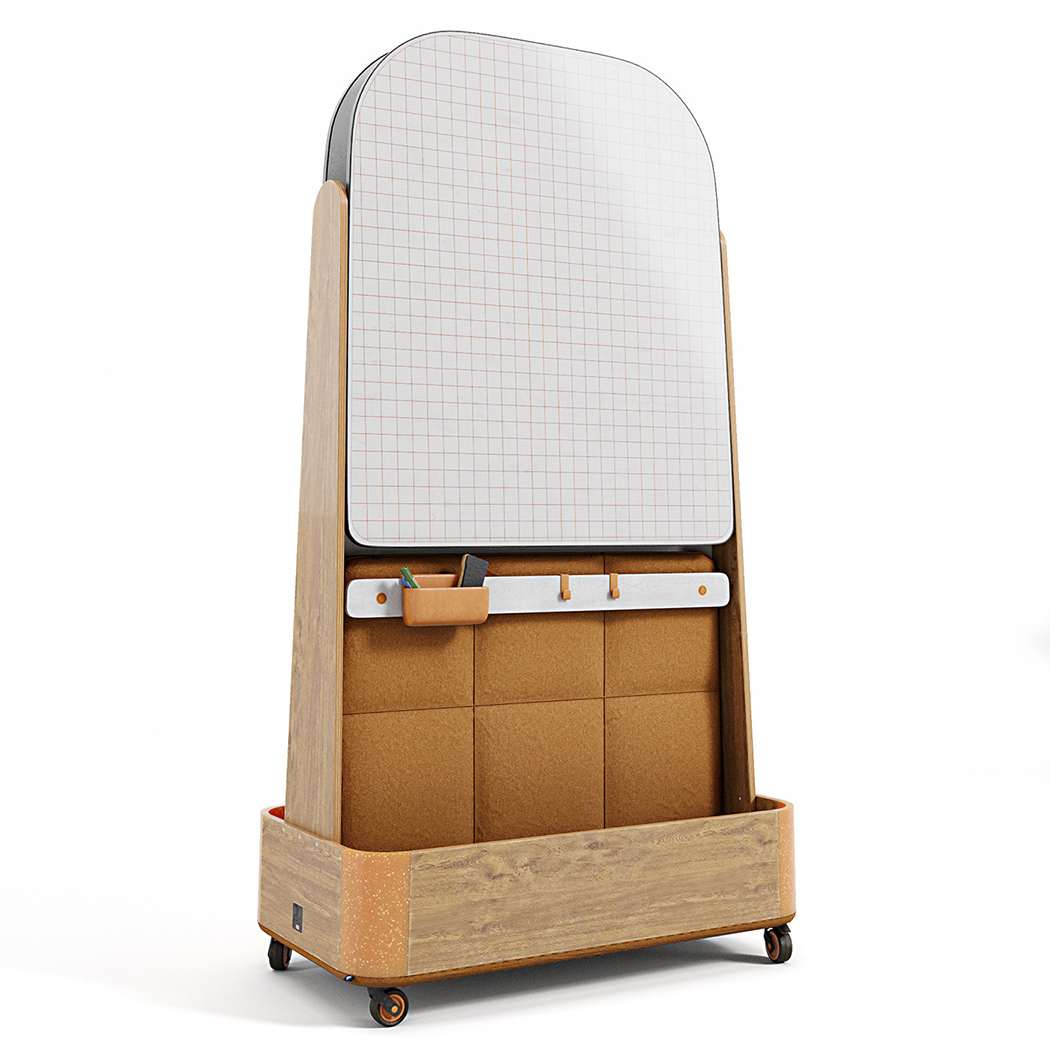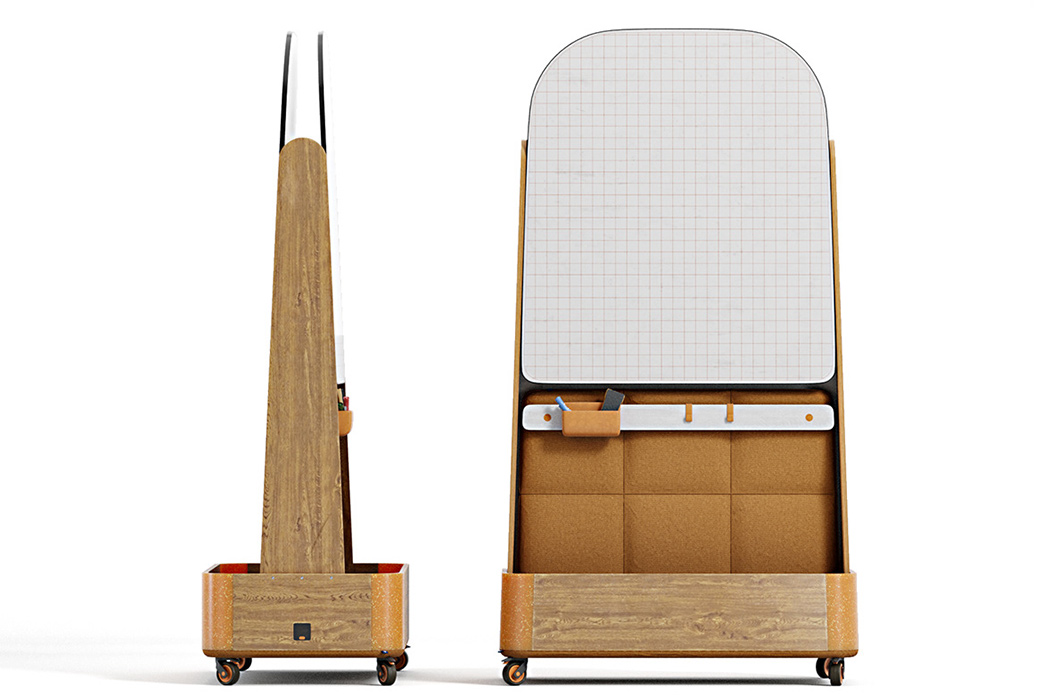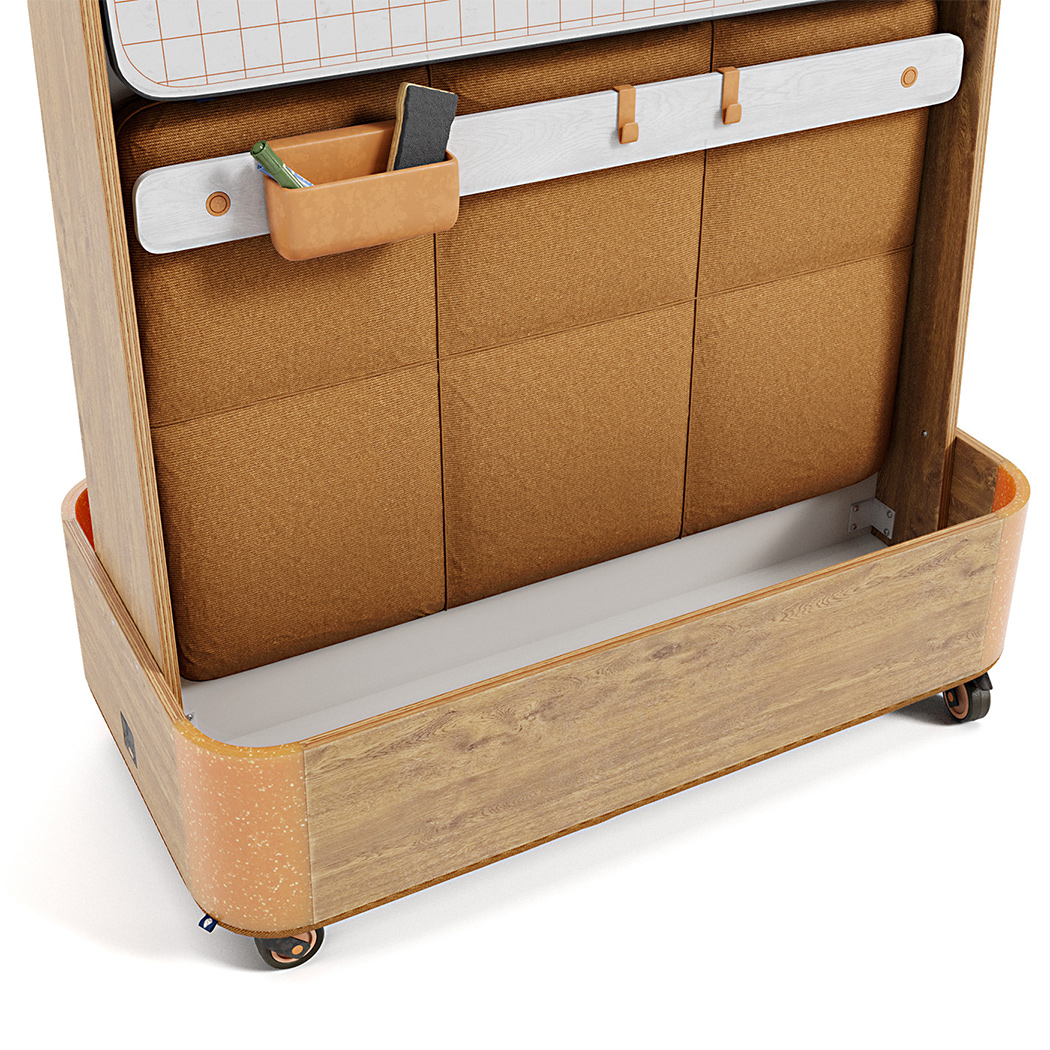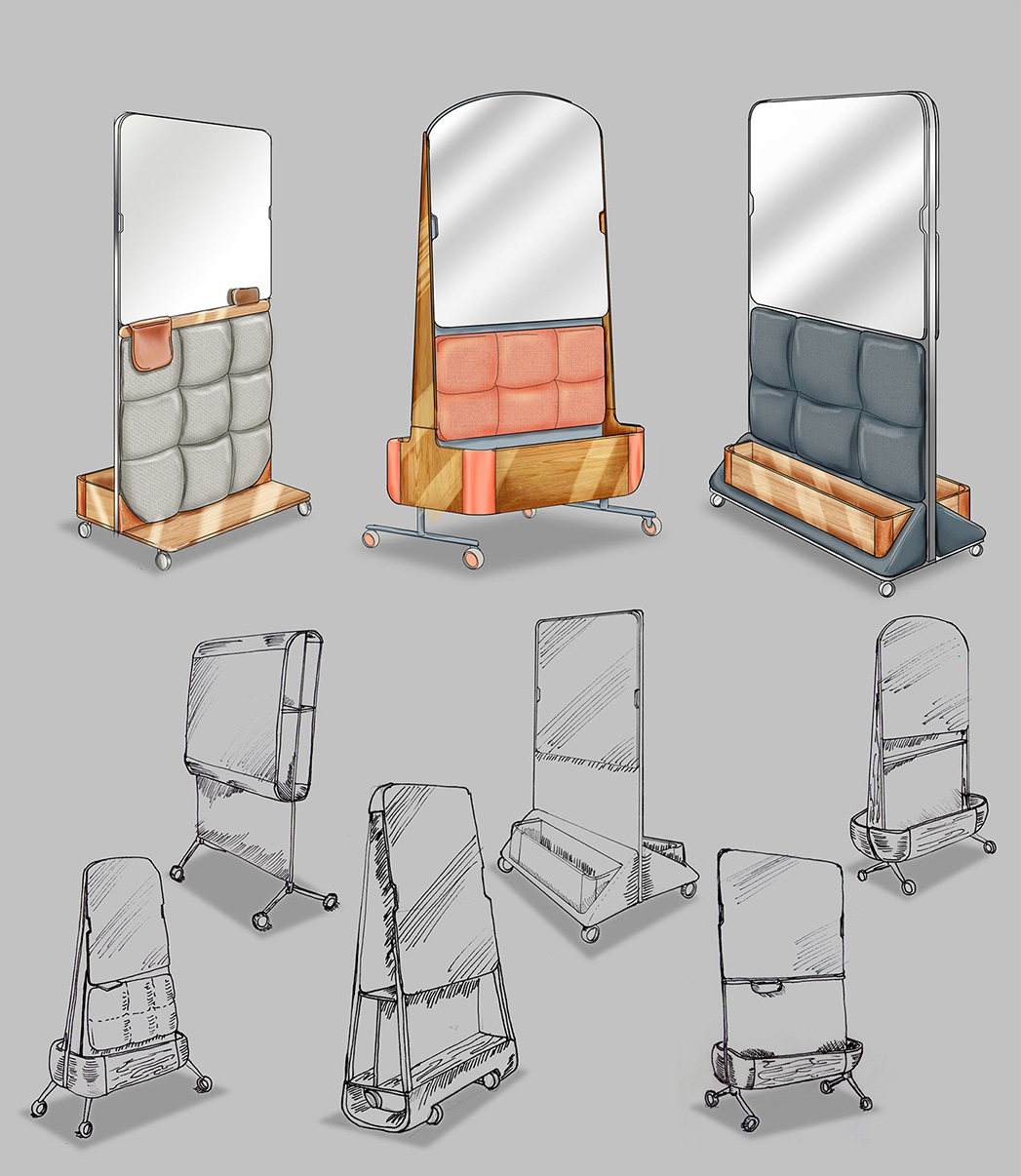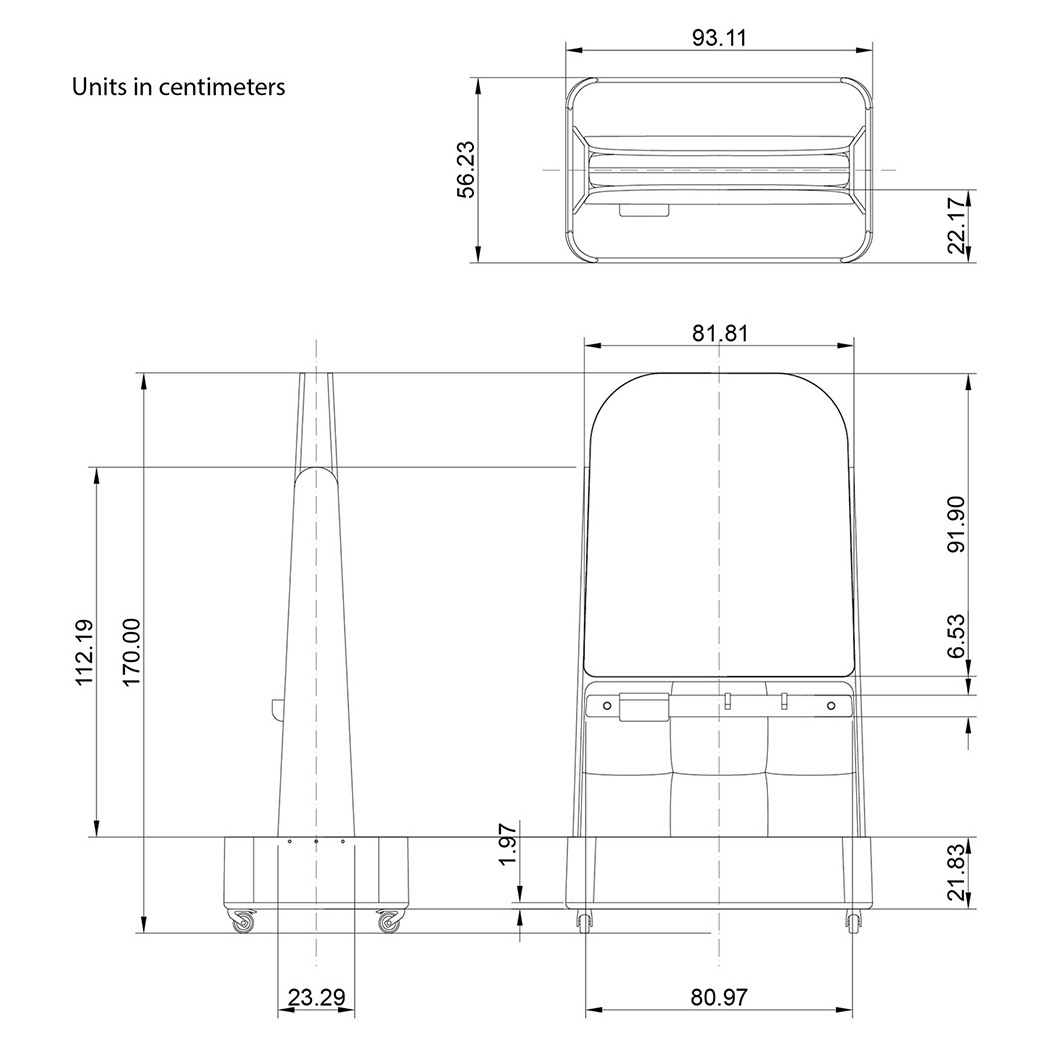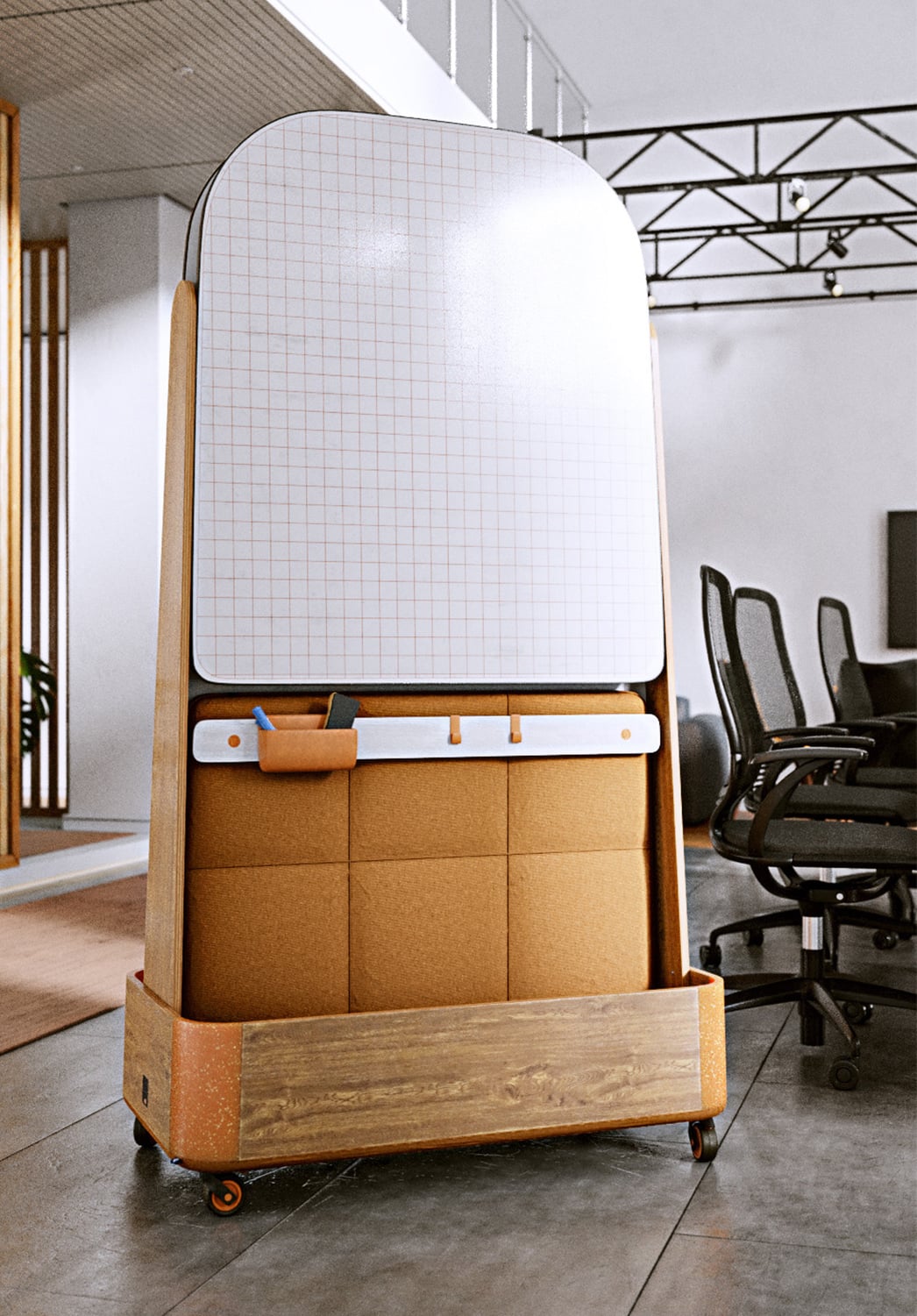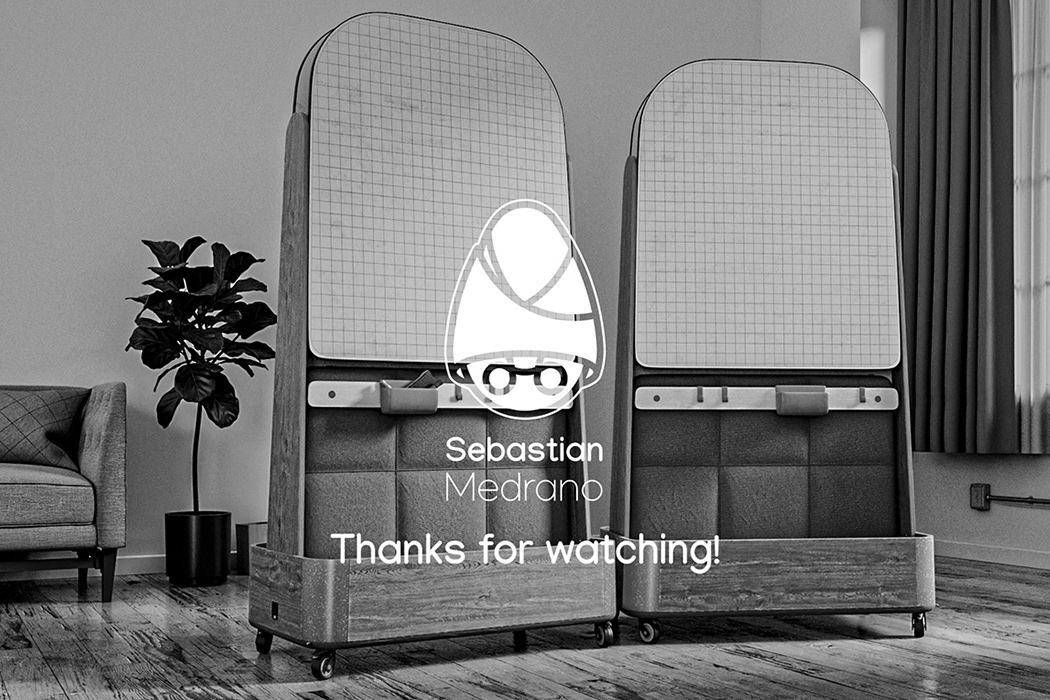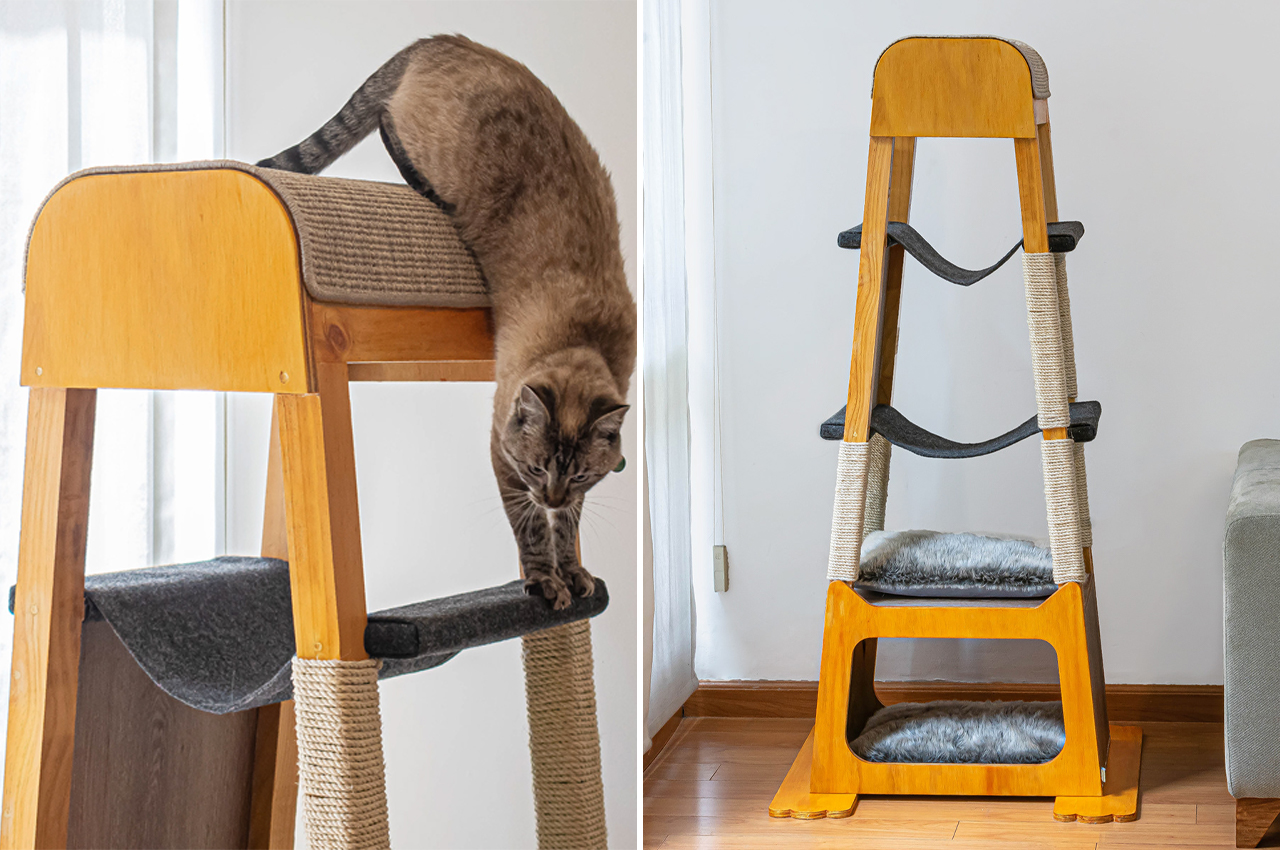
Sio is a cat tower carved from natural wood with integrated perch swings and cushioned hideouts for cats to climb and rest until they’re ready for a catnap.
Cat furniture has come a long way since the ‘70s. From the cat trees wrapped in shag carpeting to the midcentury-inspired climbing trees of today, designers have created cat furniture to meet the needs and aesthetics of the times. Today, the shag has been swapped out for more refined, wooden cat trees with integrated scratching posts and resting hideouts like the Sio cat tree designed by Sebastian Medrano Casas.
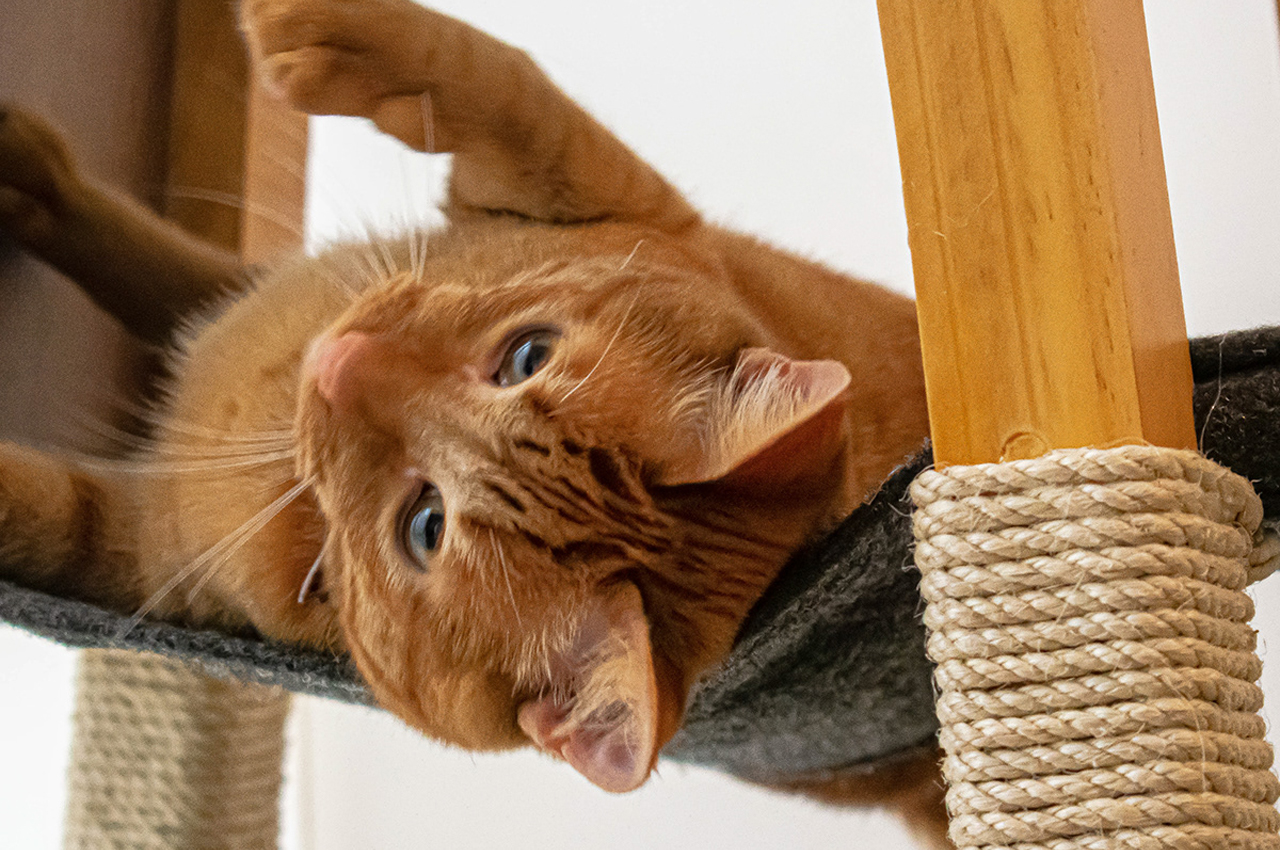
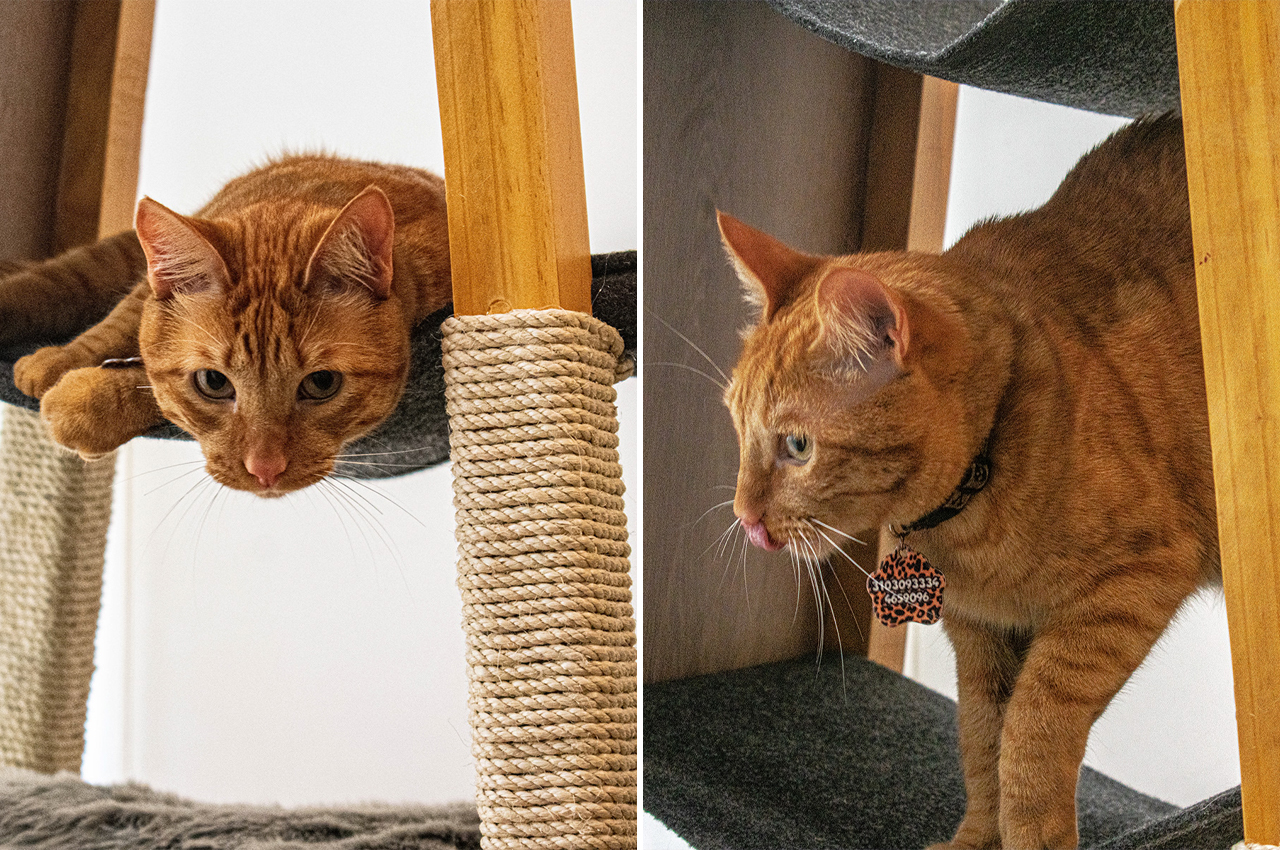
The Sio cat tree keeps the same shape as a twin step ladder, providing a semi-enclosed bottom resting area and carpeted steps with connecting slings where cats can relax and keep a close eye on their humans. Constructed from natural wood, the Sio cat tree is discreet enough to fit into most modern living rooms and blend in with the rest of the furniture.
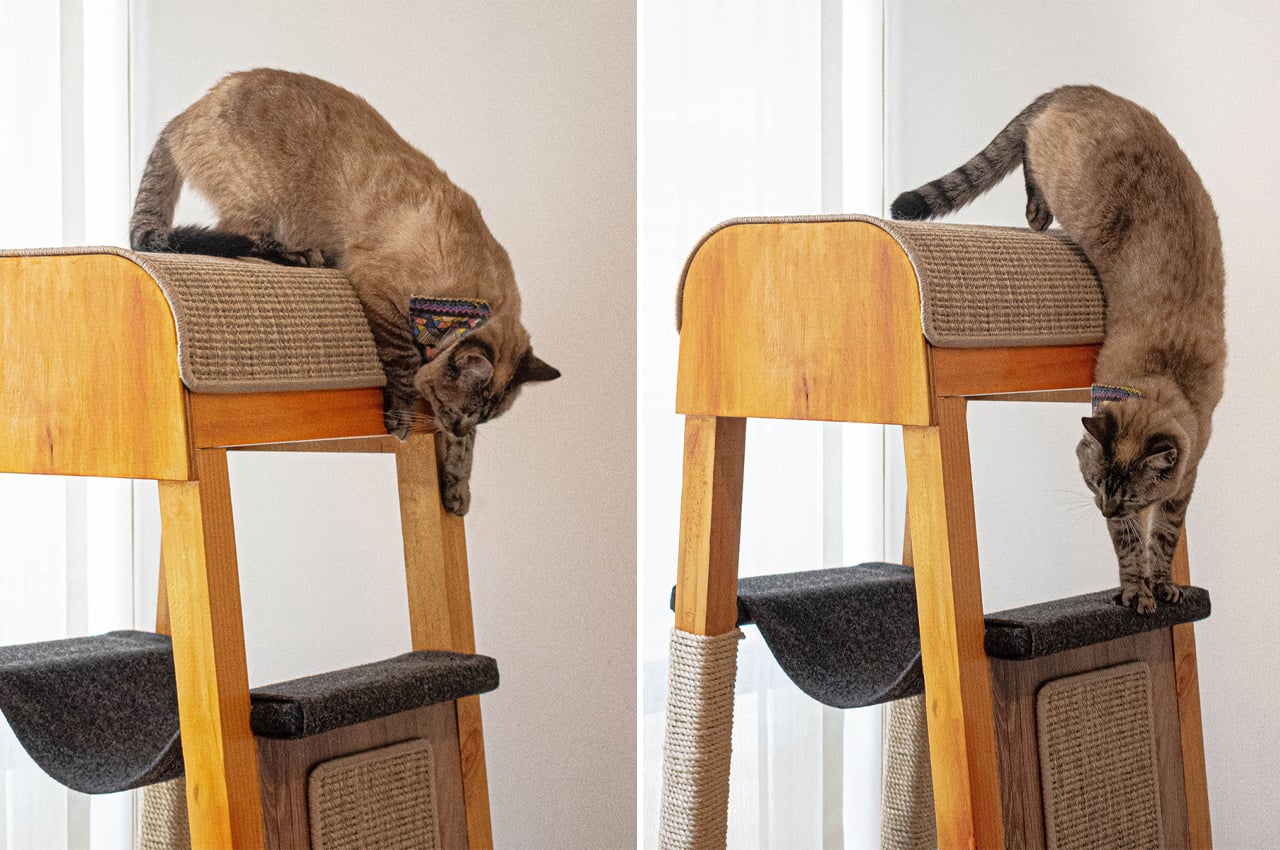
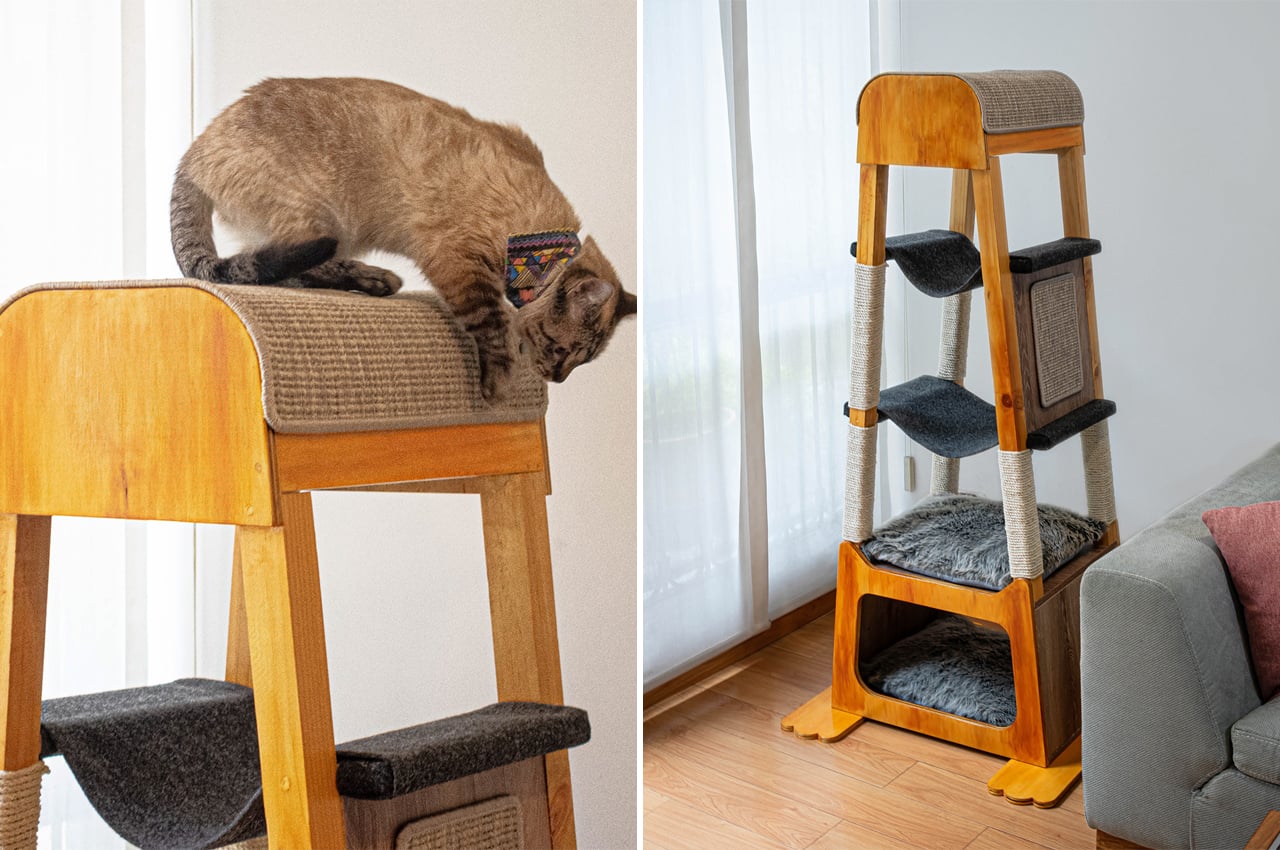
The base of the Sio cat tree is wide enough to support the rest of the tower and resting spots, but small enough to fit snugly into a living room corner space. In the semi-enclosed base of the Sio tree, cats can rest in the pillowed sleeping area for a cozy escape from the house. When cats rest in the tree’s base area, humans will hardly notice they’re there, making it the ideal, cozy nook for cats to hide out.
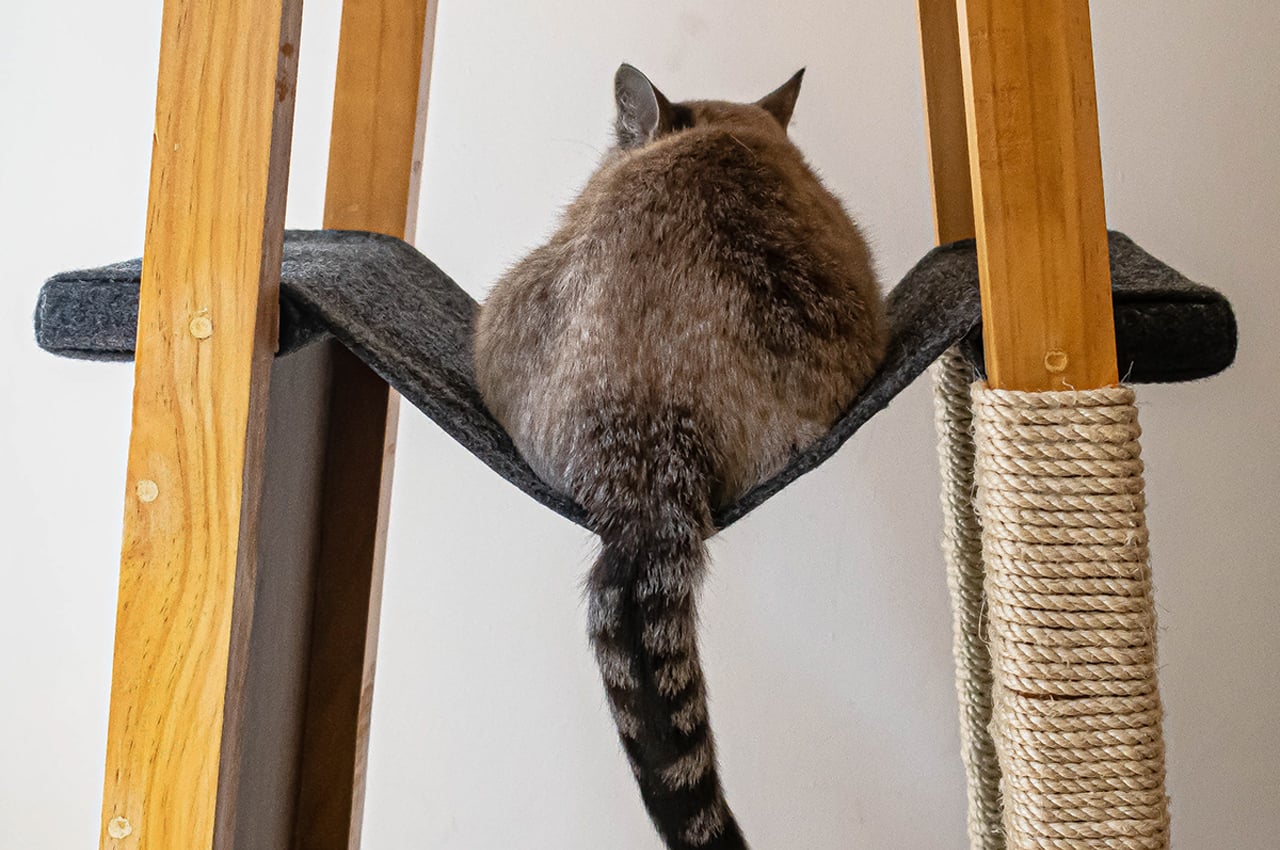
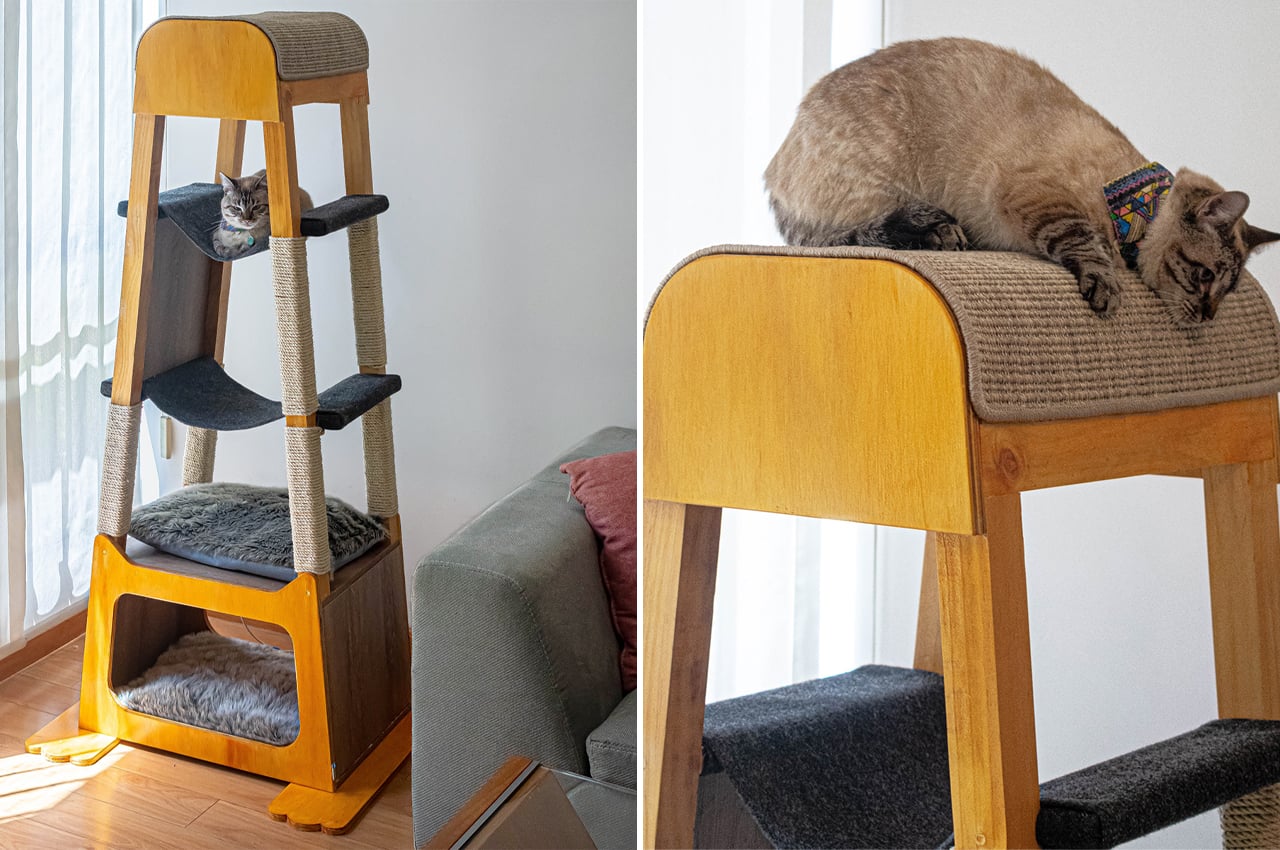
Just above the base, cats can come out from hiding and lie on the base’s cushioned roof, bordered by roped beams for good scratching bits between cat naps. Comprising two levels of the tower, carpeted slings connect the topmost steps on both sides of the tree where cats can let their paws and tails dangle. Then, the top of the cat tower provides a final lookout perch that’s overlaid with ribbed carpeting for a comfortable resting spot that could double as a scratching post for cats.
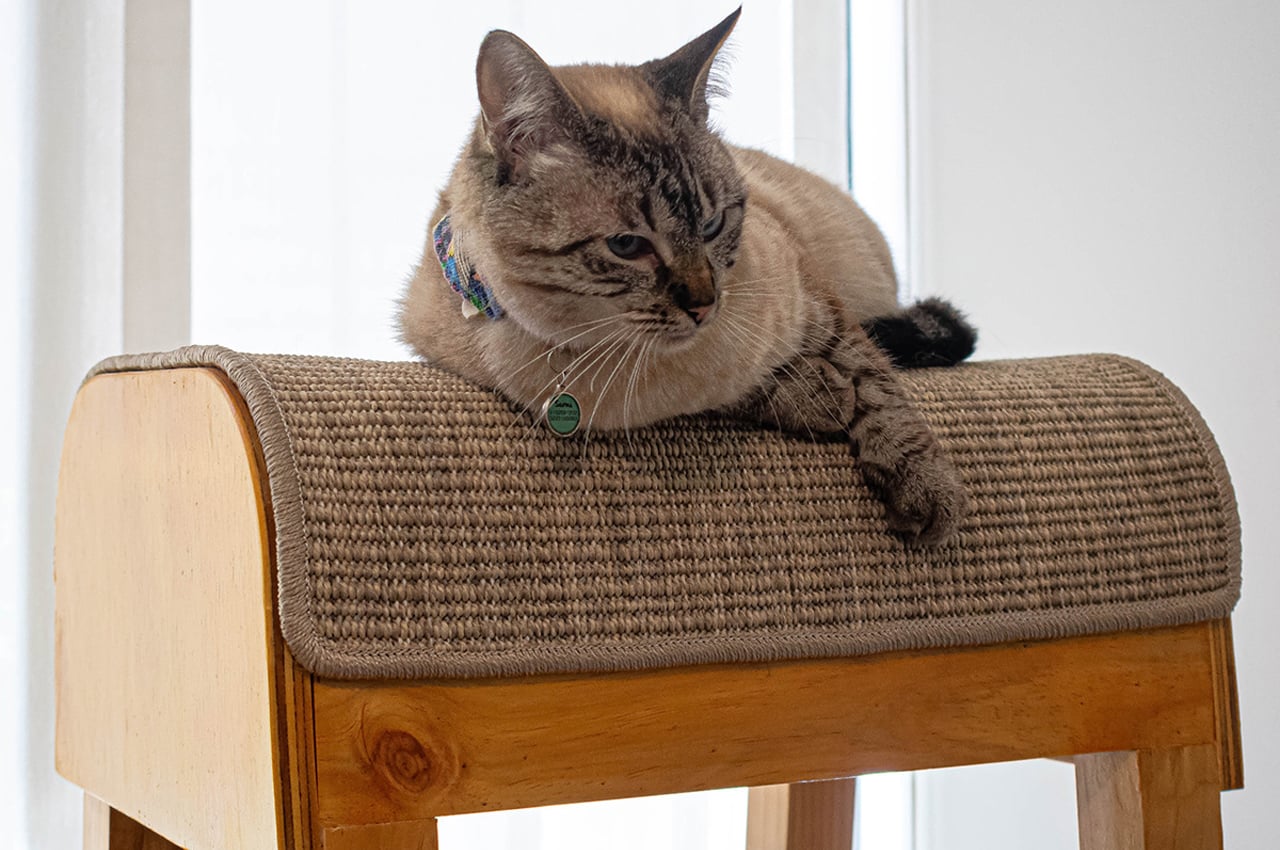
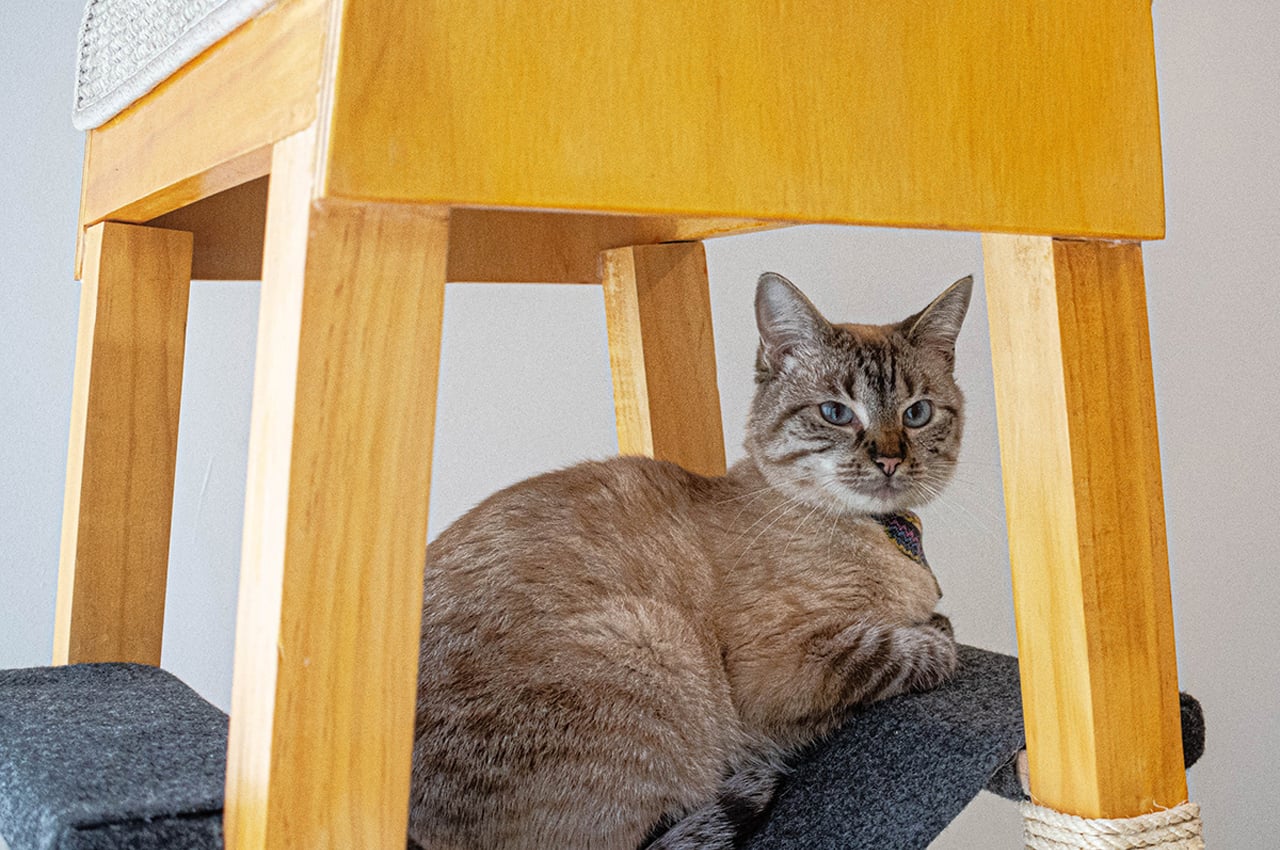
The Sio cat tower is one interpretation of the modern cat tree, one that switches outdated design elements like shag rug coats and frayed scratching walls for a more sophisticated tower constructed from natural wood, faux fur cushions, and long-lasting roped scratching beams. Small enough to tuck away into a living room corner, but big enough for your cat to get a good climb in every time, the Sio cat tower is made for the cat in each of us.
Designer: Sebastian Medrano Casas
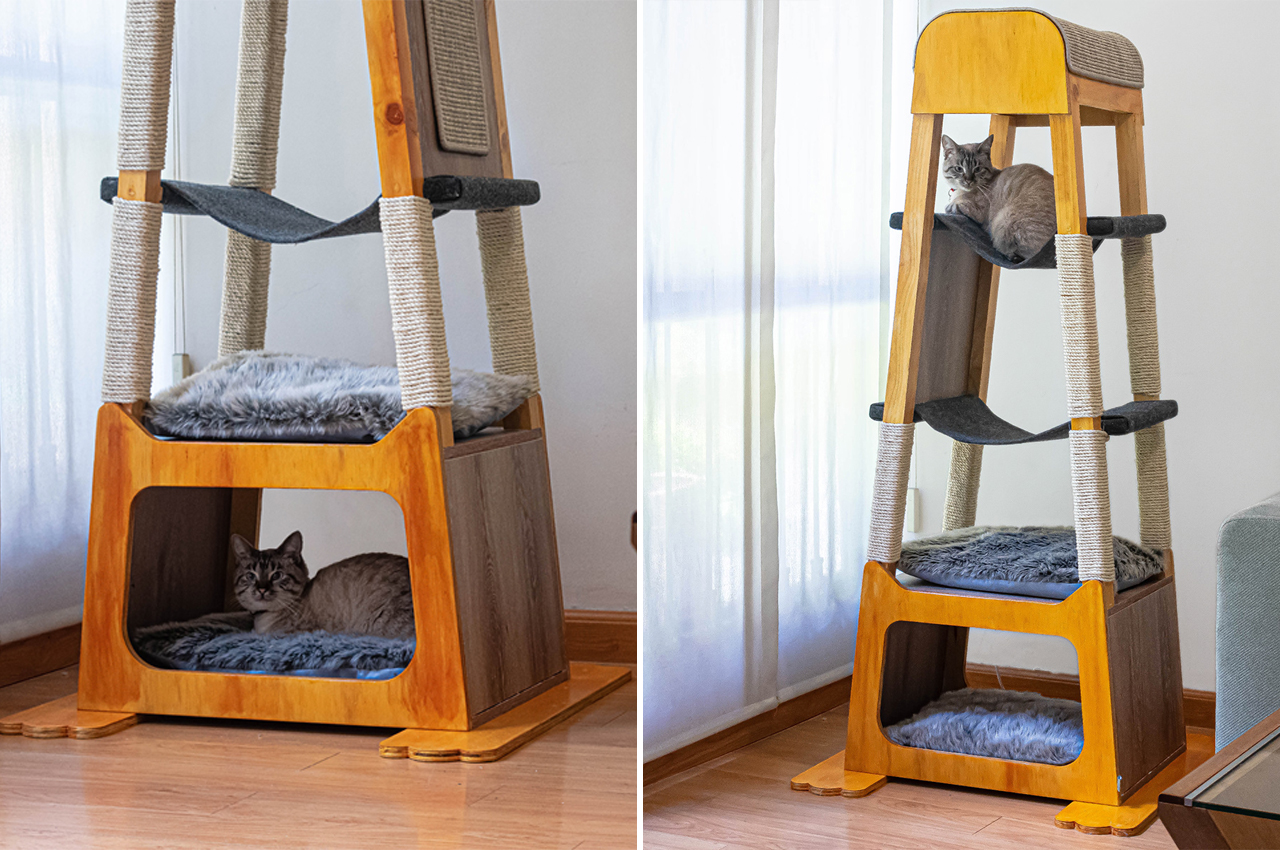
The cat tree’s base is wide enough to support the rest of the tower but small enough to fit snugly in any corner space.
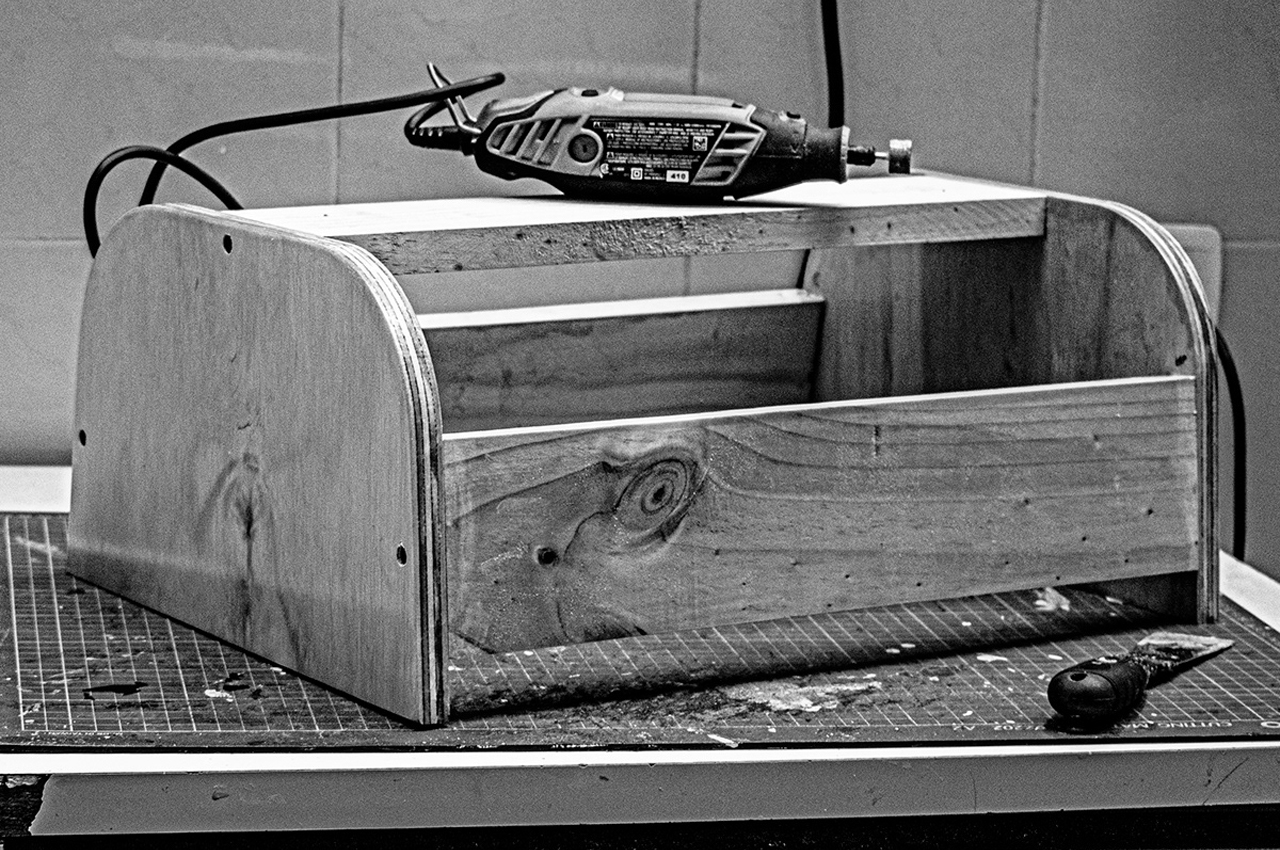
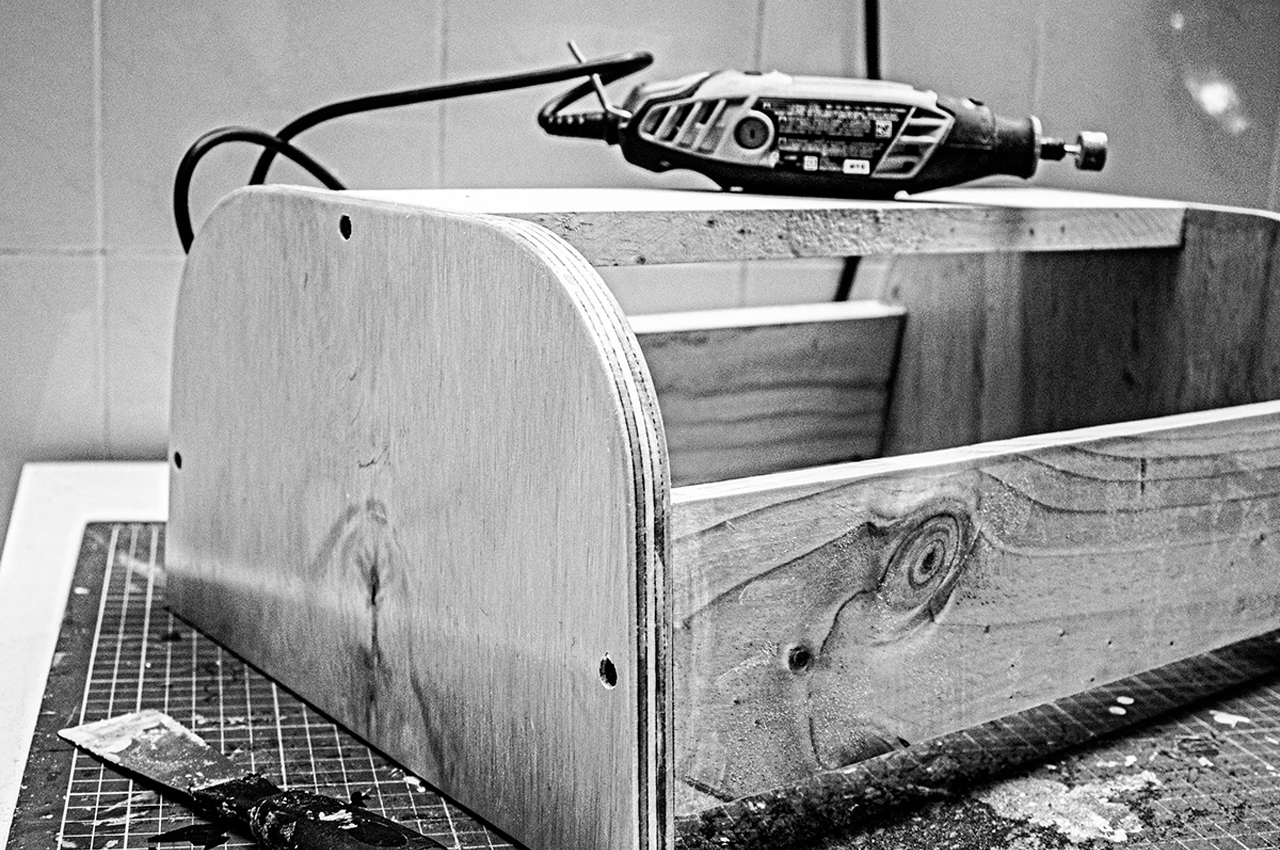
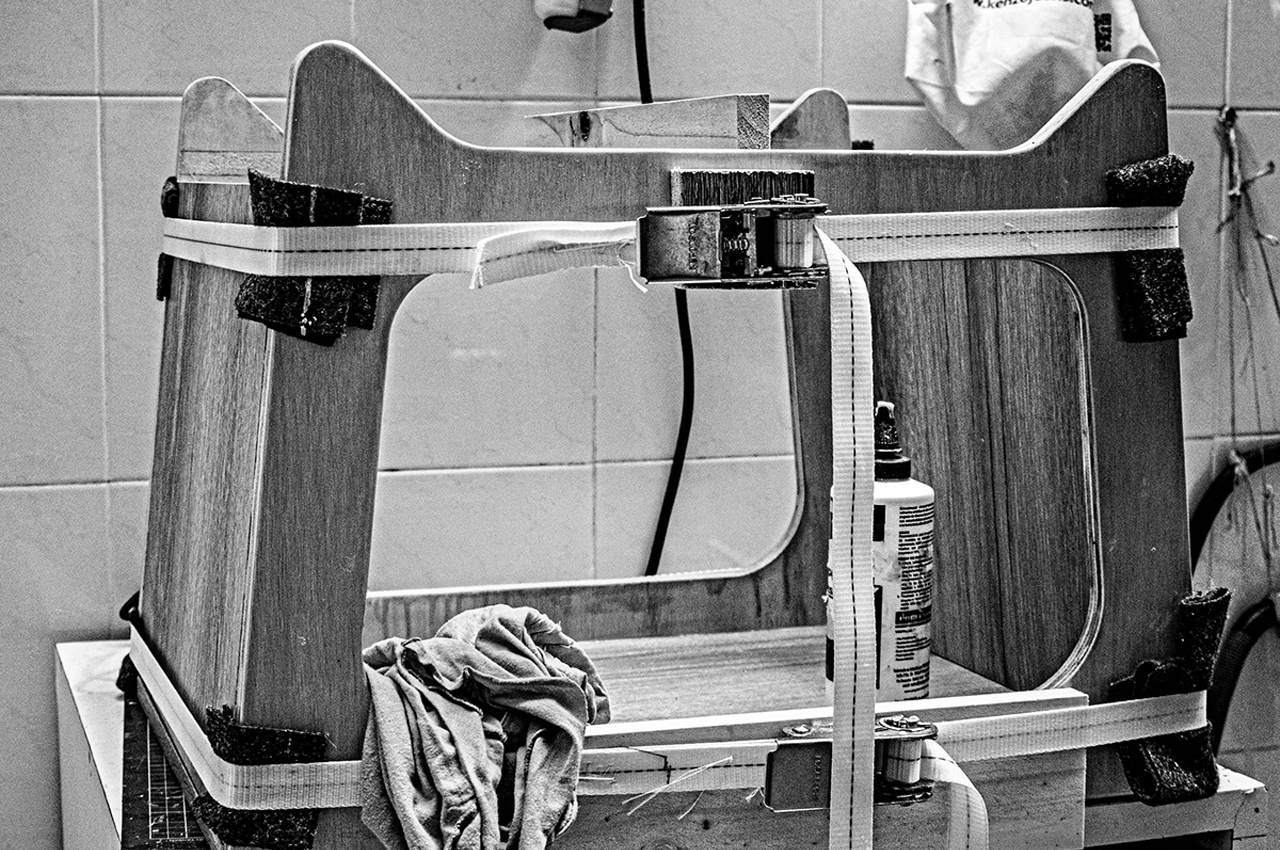

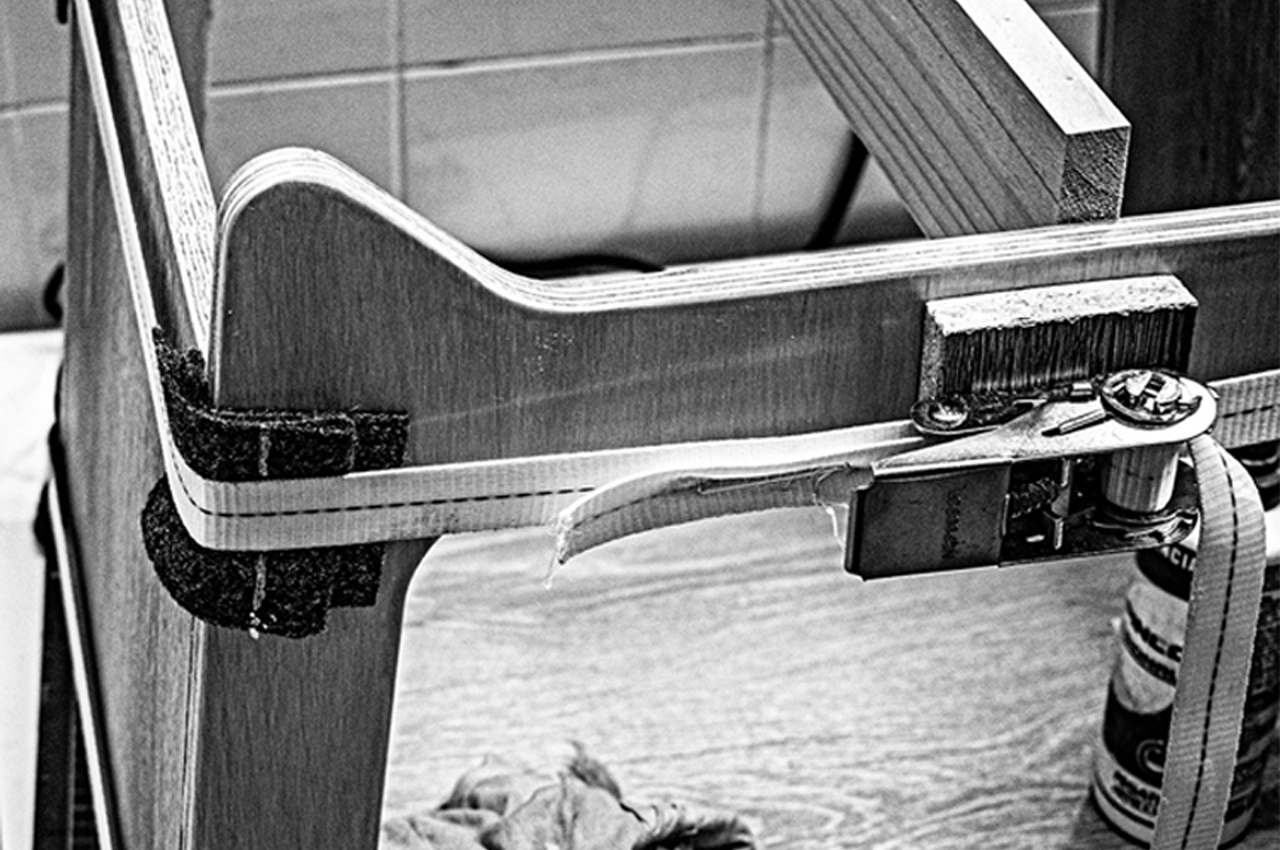
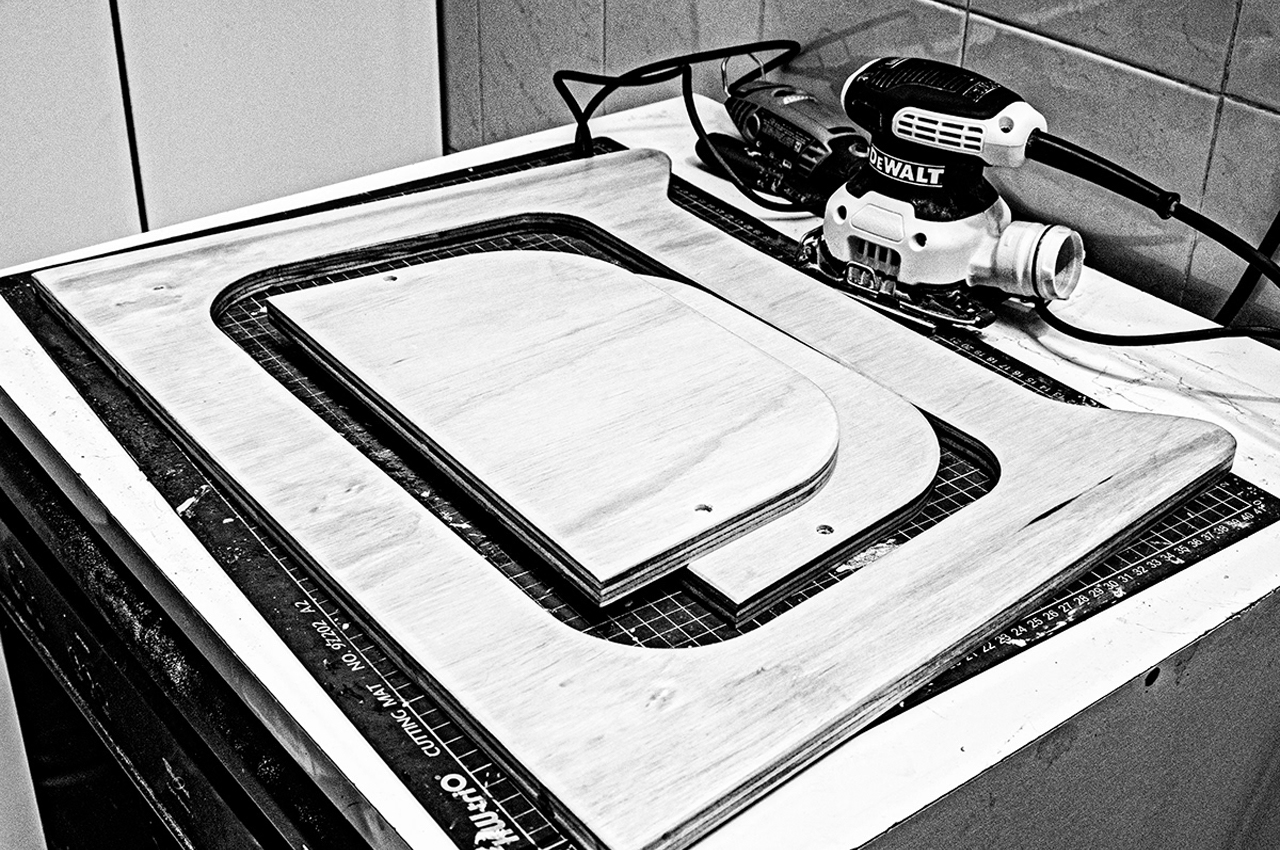
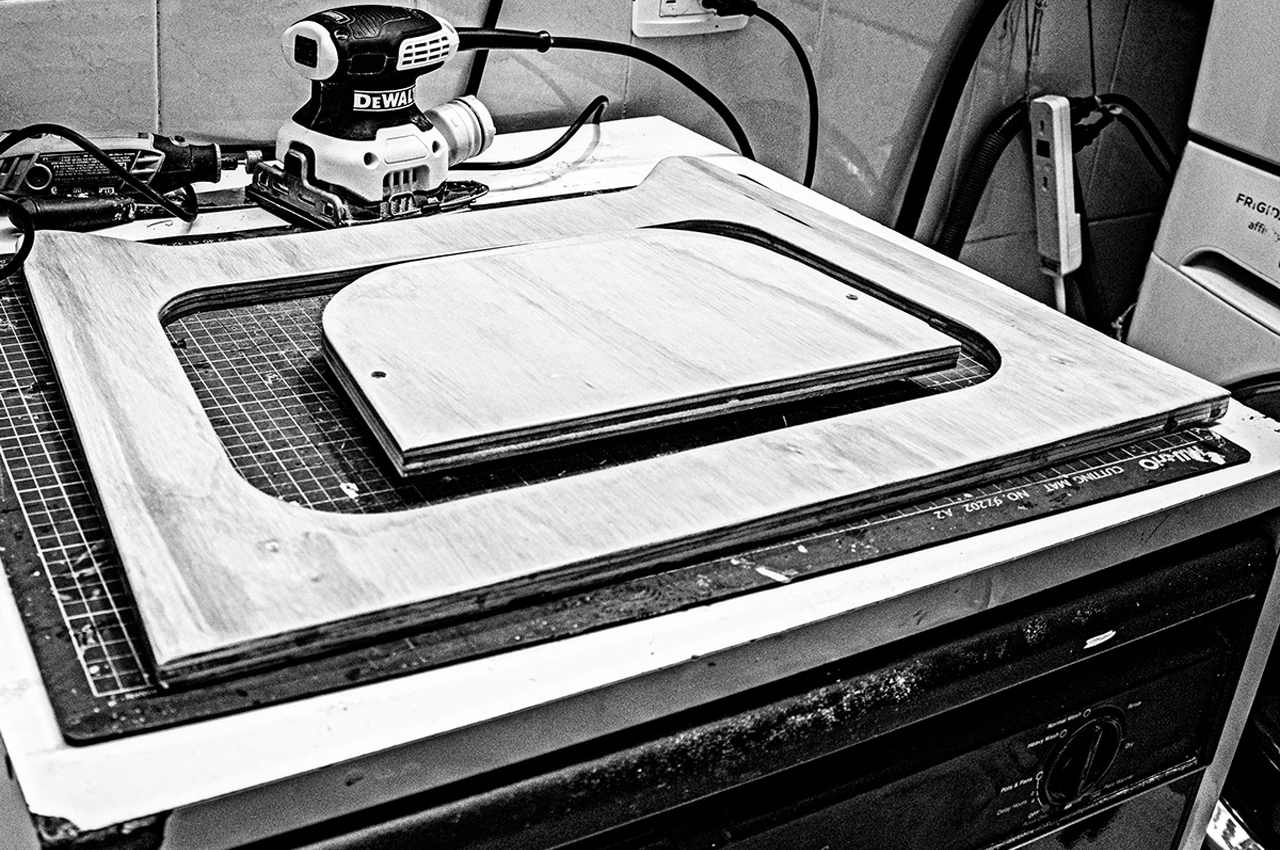
Carved from natural wood, the Sio cat tree has a durable frame and sculpted design.
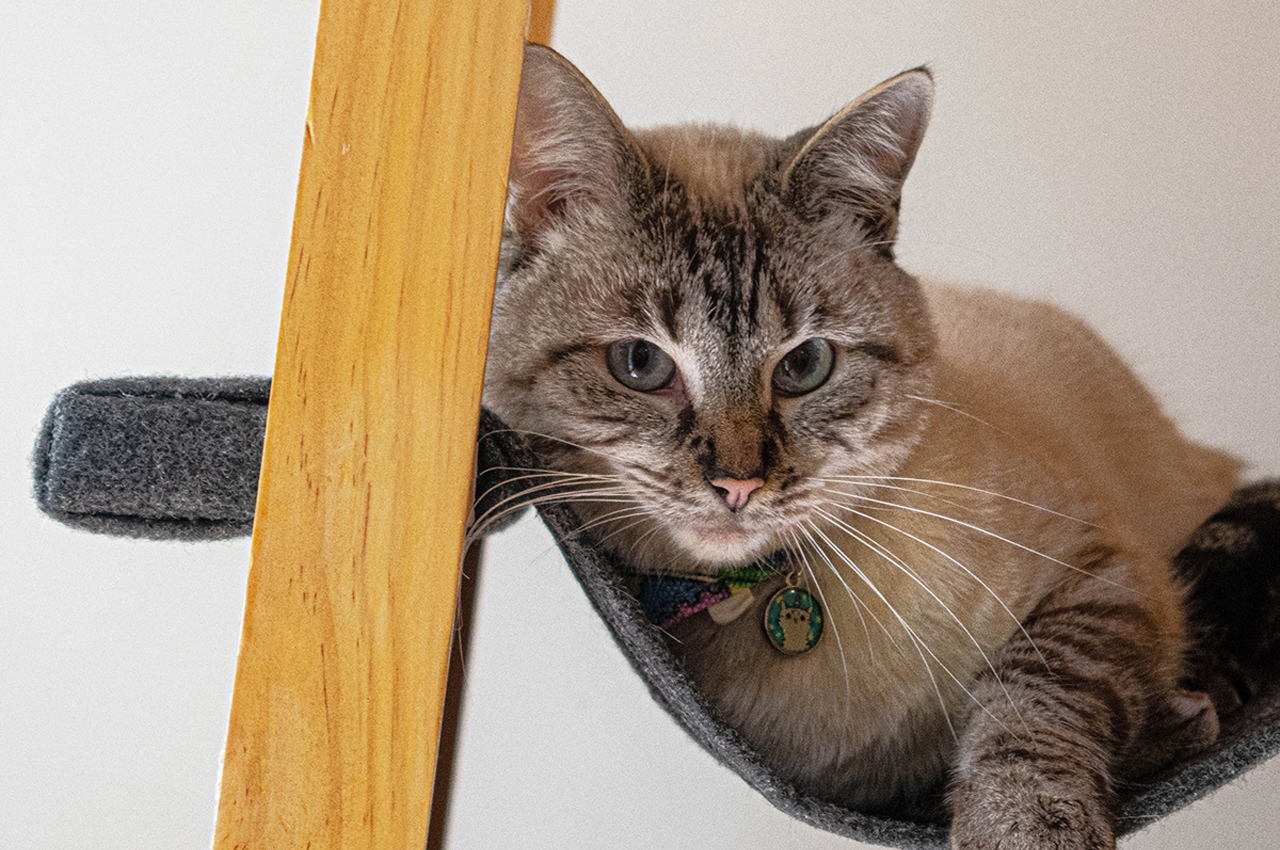
Fuzzy wool perches create the ideal resting spots for cats.
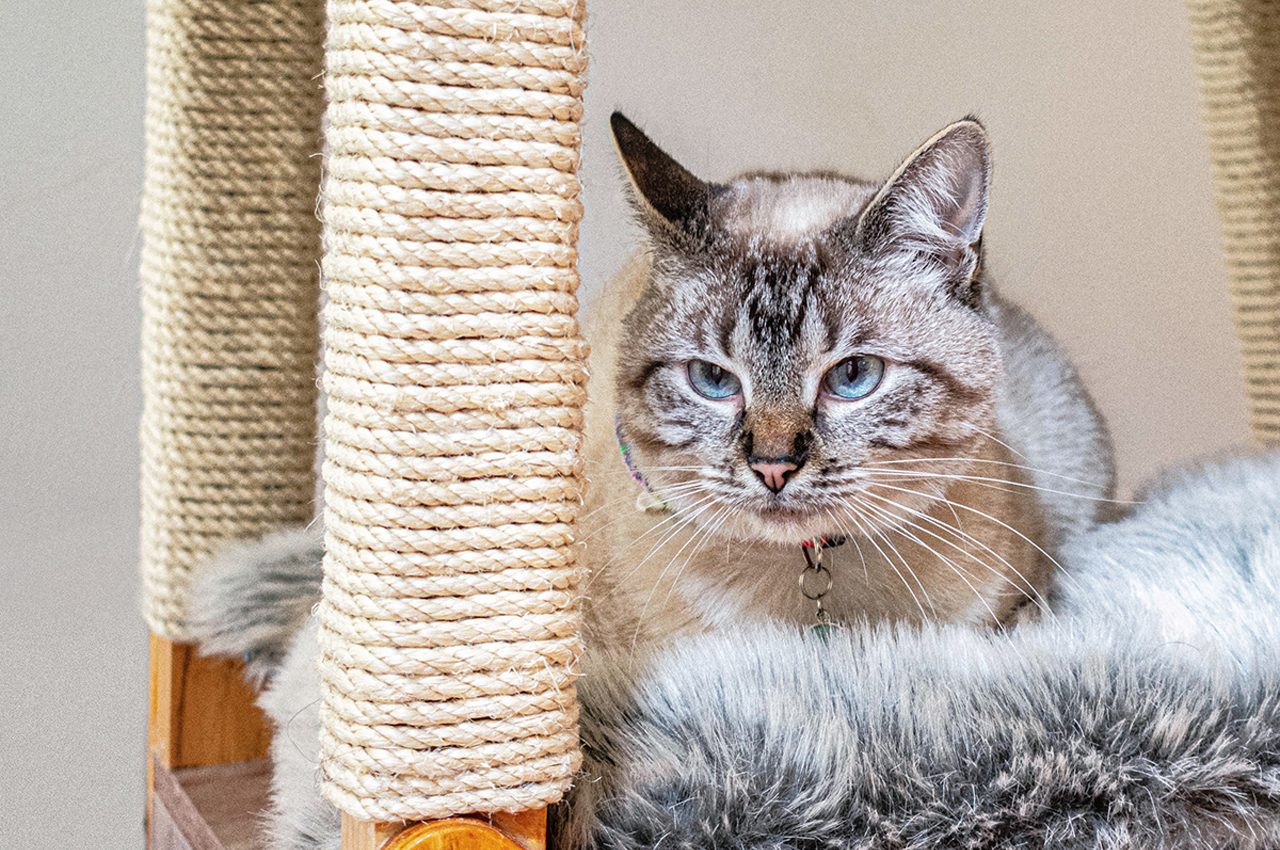
Roped scratching beams let your cats get a good scratch in between cat naps.
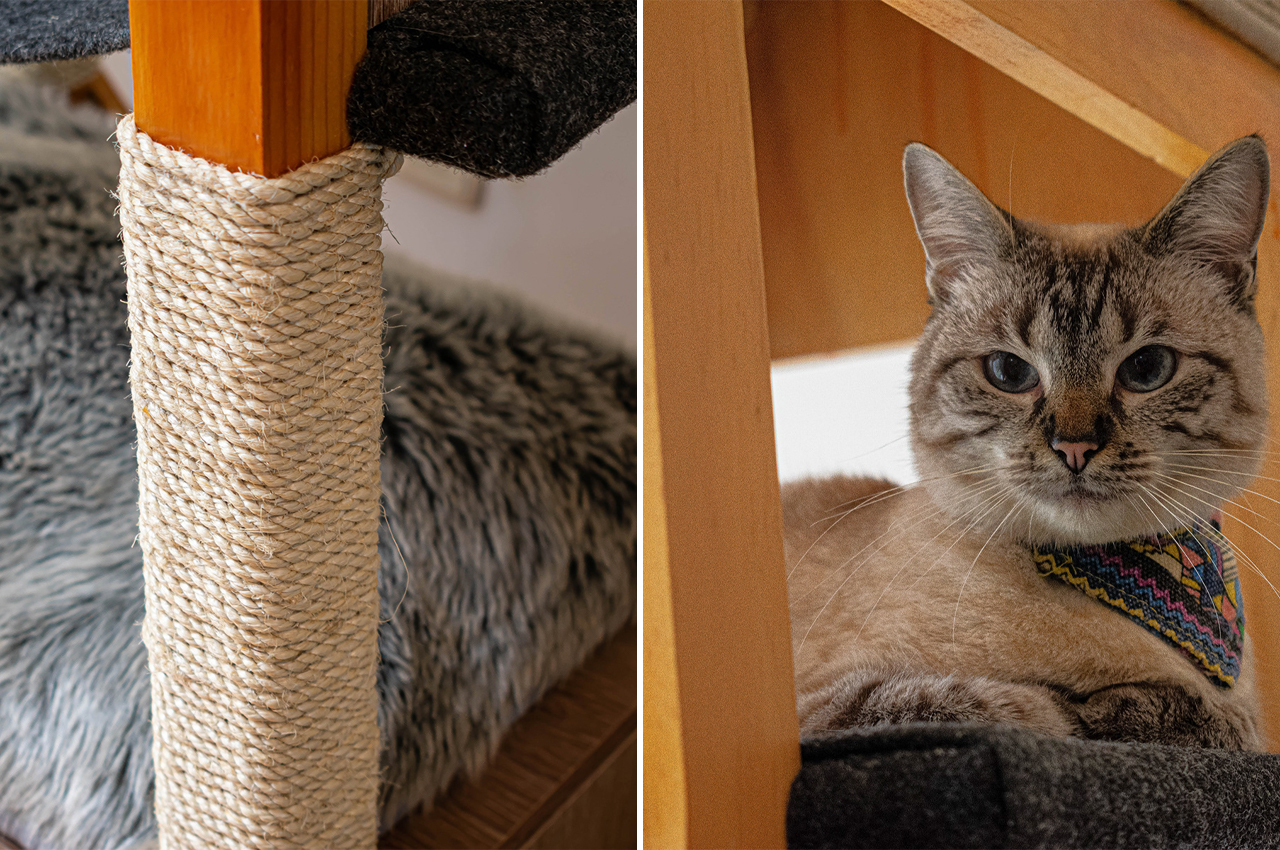
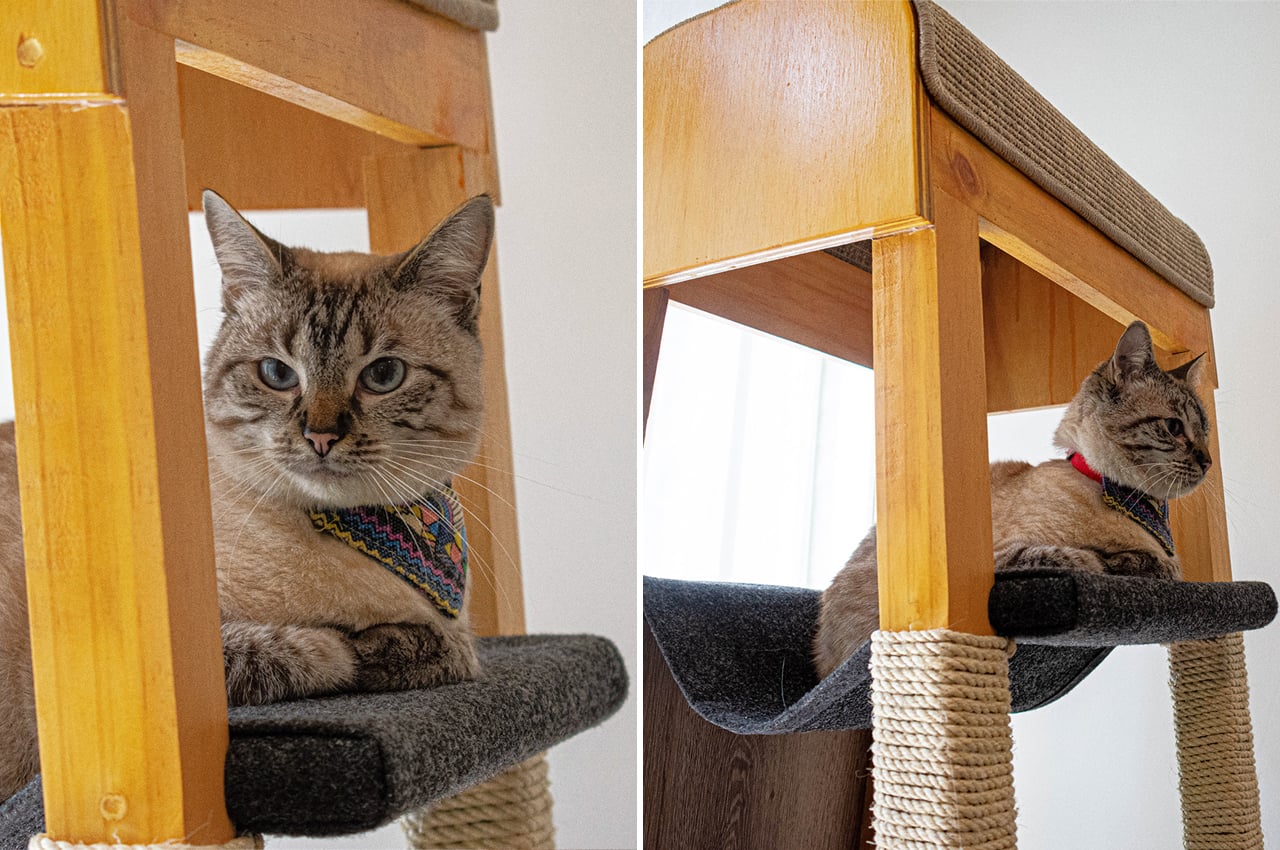
The top sling comes with a heightened headroom for your cat to stretch out.
